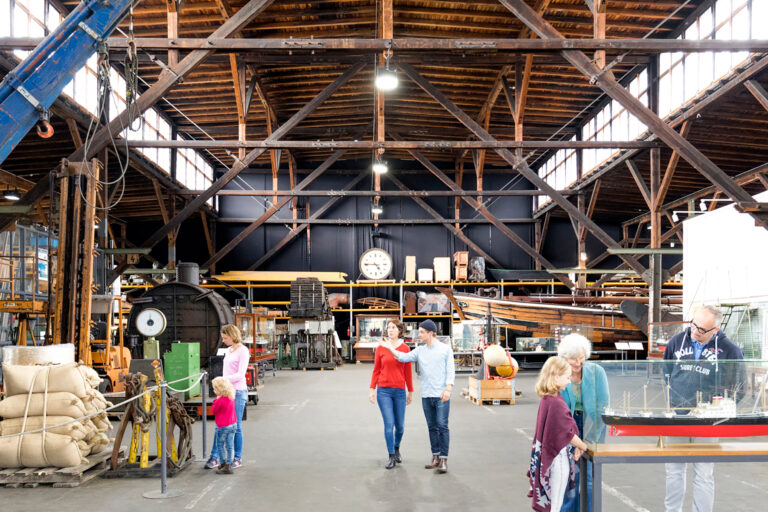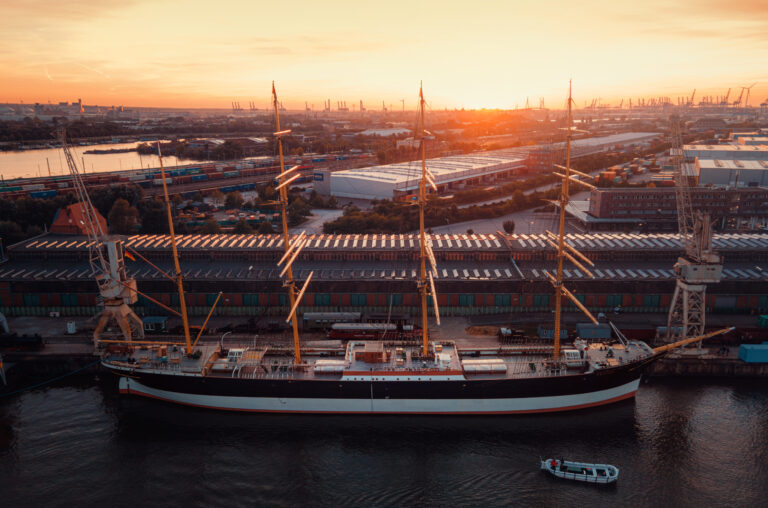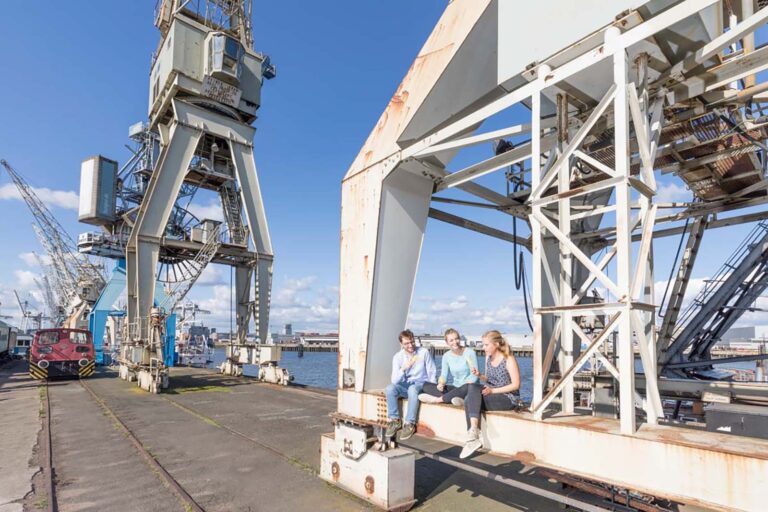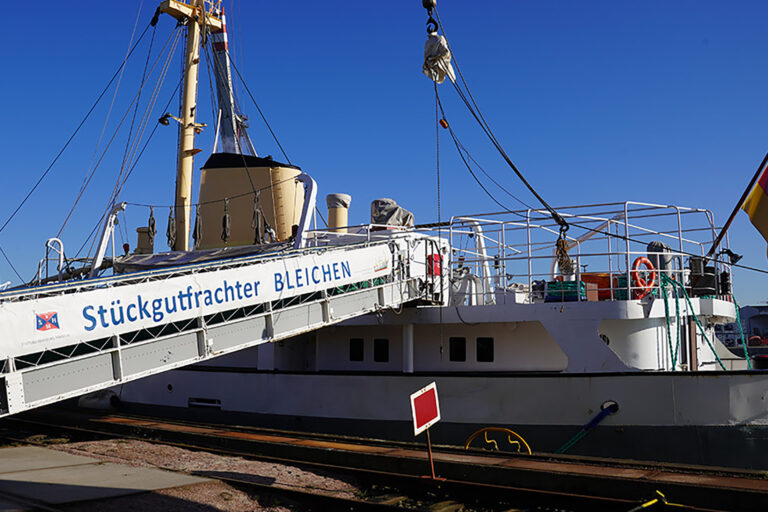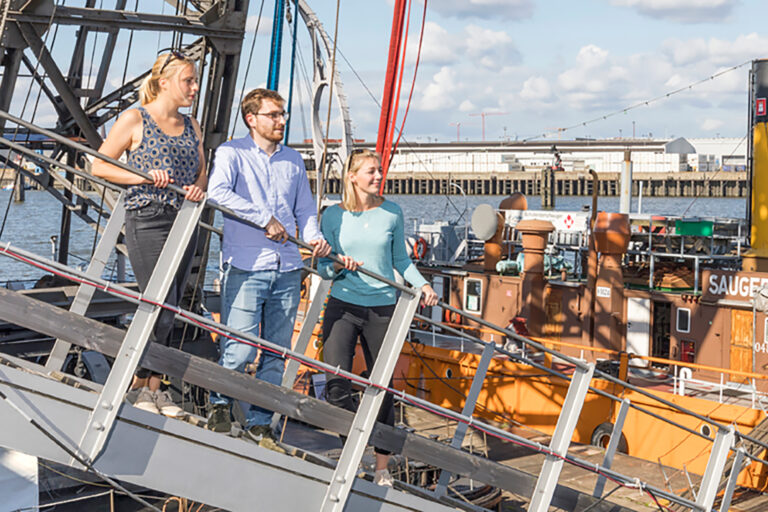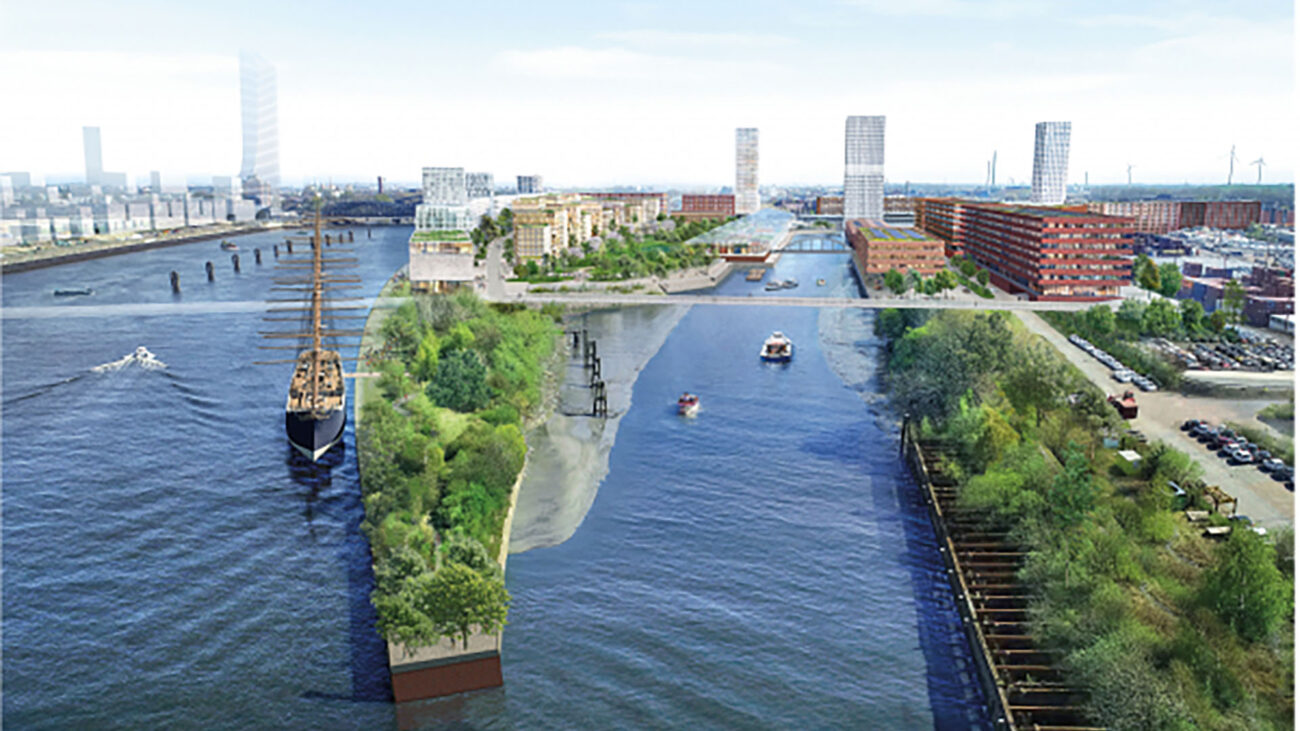German Port Museum Location Shed 50A

On the grounds around the historic 50s sheds, an important period of the port’s history can be vividly experienced with the help of original works and vehicles and a number of volunteer witnesses: the time of cargo handling before the introduction of the container. In the former free port, on the last quay ensemble of the imperial era, which is protected as a historic monument, enormous cranes tower into the sky, historic freight cars stand on the original rails of the port railroad and a coal-fired floating steam crane, the general cargo freighter “MS Bleichen” and other historic watercraft lie in the harbor basin. The most eye-catching and impressive large object among these weighty contemporary witnesses is the more than 100-year-old four-masted barque PEKING.
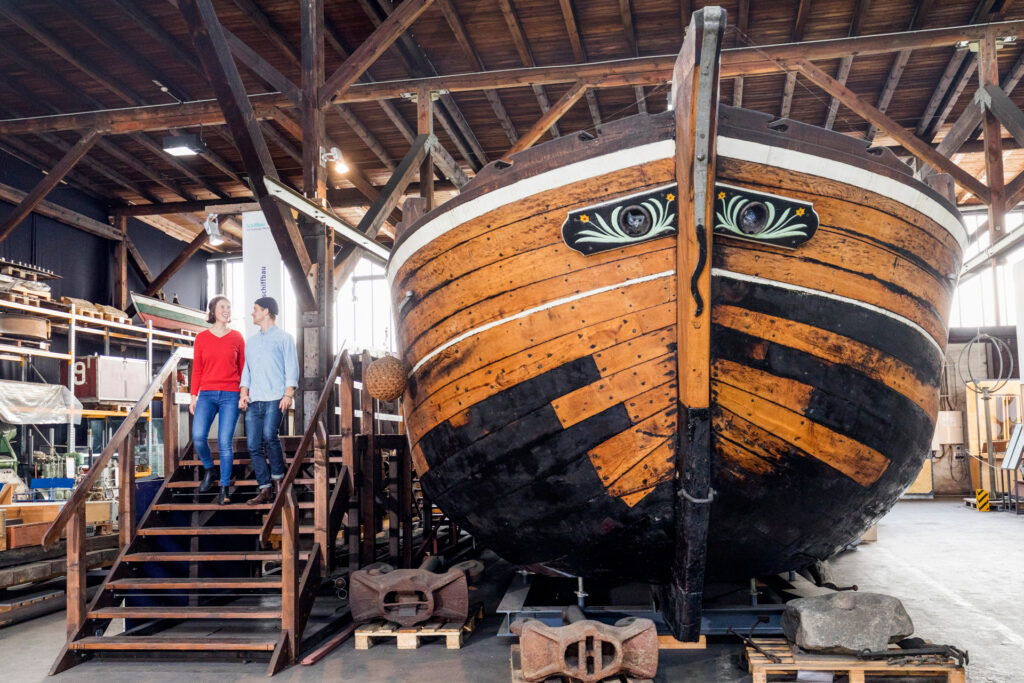
In addition, the show depot housed in the southern part of Shed 50A brings together some 10,000 objects on the subjects of port work, cargo handling, shipbuilding on an area of around 2,500 square meters. A separate section of the exhibition is then devoted to the object that changed much of everyday port life: the container. Here there is information on the beginnings and aberrations of containerization, on typical occupations of the era, and on the art of lashing – that is, mooring – containers to ships.
Volunteers regularly demonstrate what a floating crane sounds like under steam, how a van carrier loads containers, or how laborious a dive through the harbor basin can be when the breathing air for the diver has to be pumped through a hose by muscle power. The “port seniors” know what they are talking about, they have spent their working lives in the port or are still working there. They are joined by freelancers who introduce young museum visitors in particular to the exciting history of the port and the changes in work. And where do you stop after a long day at the port? In the original preserved “Kaffeeklappe”, where visitors can warm their hands with a cup of coffee and swap stories.
The origin of the museum location at the port is the “maritime” collection areas of the Museum der Arbeit in Barmbek, which have been gathered since 1986.
Permanent Exhibition
Kaffeeklappe – The last historical coffee hut
It was impossible to imagine traditional port operations without the coffee huts. They supplied the workers during their shifts and offered the port people the opportunity to recharge their batteries during the break. When the workload was heavy, several shifts had to be pushed one after the other, and the workers could be sure that they were always supplied with food and drinks in the coffee flap.
Nowadays, the coffee flap in the head building, Shed 50A, offers museum visitors coffee and cake, hot and cold drinks during opening hours and invites them to linger. Thus, the guests of our museum have the opportunity to grasp this atmosphere with all senses in the last historic coffee flap of the Port of Hamburg.
Opening Hours
Monday 10 – 5
Closed on thursdays
Wednesday till Friday 10 – 5 Uhr
Saturday and Sunday 10 – 6 Uhr
“Zampelbüdel” – Shop
The museum store got its name in reference to the canvas sacks used by dock workers to carry their personal items for daily use. They were called “Zampelbüdel”. In the shop you can buy souvenirs such as books and postcards, key chains, ship models, maritime clothing, coffees and teas, and many other port-related souvenirs.
The opening hours are the same as those of the museum.
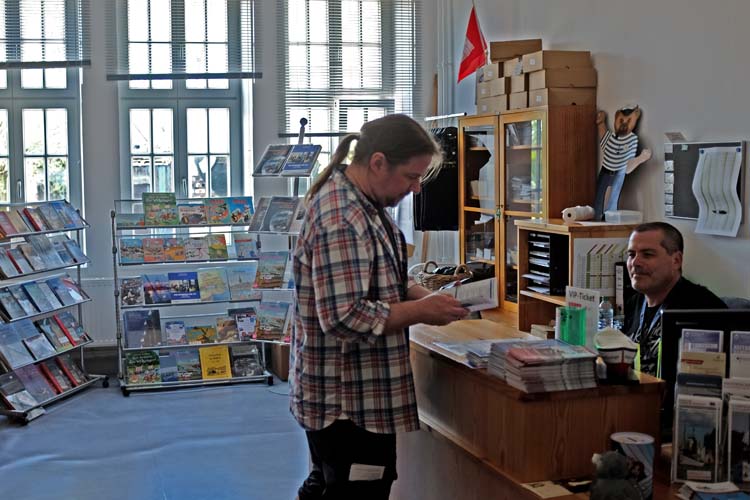
The construction of the German Port Museum and the restoration and transfer of the four-masted barque PEKING are being fully funded by the Federal Government Commissioner for Culture and the Media on the basis of a resolution of the German Bundestag with a total of 185.5 million euros.

The preparatory measures for the arrival of the PEKING in Hamburg as well as the commissioning of the ship are supported by the Ministry of Culture and Media of the Free and Hanseatic City of Hamburg.



